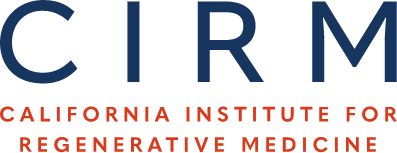Our Review Process

How We Fund Grants
At CIRM, we aim to keep our grant funding process as simple, clear, and thorough as possible. This guide provides an overview of the process, with links to learn more and contact information for CIRM staff who can help.
The process has Three Phases: Application, Evaluation, and Approval
- All CIRM programs are designed to align with our strategic plan and achieve CIRM’s mission.
CIRM’s mission is to accelerate world-class science to deliver transformative regenerative medicine treatments in an equitable manner to a diverse California and world. In support of this mission, CIRM funds projects across five major areas: Discovery (DISC), Translational (TRAN), Clinical (CLIN), Education (EDUC), and Infrastructure (INFR). Our Funding Opportunities page is a starting point for an overview of each area and detailed information about specific funding programs. - Program scope is defined by requirements in the PA or RFA.
Each funding program is described in a Program Announcement (PA) or Request for Applications (RFA). The PA or RFA is posted on CIRM’s website (under Funding Opportunities) approximately two (2) months before the submission deadline. Read PAs and/or RFAs carefully and/or consult with CIRM staff to determine where your project fits. Contact information for consultation with CIRM can be found in each PA or RFA. - Consider your timeline for developing and submitting an application before you decide to apply.
Dates for program opening (when you can view and begin an application) and the deadline for submission are typically posted at the same time as the new PA or RFA, just below the PA or RFA link. You can begin a consultation with CIRM staff as soon as the PA or RFA is posted, but you must wait until the program opens to populate an application. CIRM does not grant individual extensions to the submission deadline. - Consult with CIRM Science Officers as early as possible
You can begin a consultation with CIRM staff as soon as the PA or RFA is posted. CIRM Science Officers can advise on whether your project is likely to meet the requirements of the PA or RFA and/or suggest a different CIRM funding program. Science Officers can also help you craft an application or revise an application that has previously been reviewed by CIRM. Especially if it’s your first time applying for a CIRM grant, we highly encourage you to schedule a pre-submission consultation with a CIRM Science Officer well before the submission deadline. Contact information is provided in each PA or RFA. - Start your application and download CIRM’s templates for required application materials.
If you determine that the timeline is appropriate and believe you have a project that meets PA/RFA requirements, log in to our Grants Management Portal, navigate to Open Programs, and start an application. Complete and save the Eligibility section first, then navigate to the Document Uploads section and download CIRM’s templates for documents and/or workbooks required for a complete application. For most CIRM applications, these materials comprise the bulk of the application. Applicants are responsible for downloading and populating the current application templates. Never assume that templates from a prior review are up to date.For instructions on how to apply through the Grants Management Portal, visit this page. If you need help accessing the Grants Management Portal, please email webmaster@cirm.ca.gov.
- Complete your application and submit before the 2pm deadline.
Most CIRM application deadlines are at 2:00 pm. There is no grace period. If you have fully completed the application but encounter technical difficulties submitting, contact review@cirm.ca.gov for help. Your application will be accepted as long as it is complete, with all required materials uploaded, in the Grants Management Portal by 2:00 pm.We recommend that you make all entries and upload all required documents and/or workbooks a few hours before the deadline to avoid system delays due to traffic. CIRM does not grant individual extensions to the submission deadline.
Once your application is complete and submitted, it moves on to the evaluation phase, or review process.
Evaluation begins with an Eligibility Review by CIRM staff. For some programs, this may be followed by a screening or qualification step. If an application moves forward, it will then undergo External Review, wherein it is evaluated by CIRM’s advisors from the field. Learn more about each stage below.
- Eligibility Review ensures your application meets all of the program requirements listed in the RFA or PA. Applications that are found eligible move to the next stage. Applicants who are found ineligible receive a description of why their application did not meet the requirements and may have the opportunity to remedy the issue and move forward.
- External Review is conducted by one or more of CIRM’s board-appointed review panels. The Grants Working Group (GWG) conducts scientific evaluation for CIRM’s Discovery (DISC), Translational (TRAN), and Clinical (CLIN) programs, as well as most Infrastructure (INFR) and Education (EDUC) programs. CIRM also has a Facilities Working Group for evaluation of some Infrastructure (INFR) proposals. Applications are critiqued and scored according to scientific merit, technical merit, and/or attention to principles of diversity, equity, and inclusion (DEI). Reviewers use the key questions or review criteria and scoring system described in the PA or RFA to guide their evaluation.
- Screening or Qualification may be necessary to narrow the pool of applications in cases where the total number of submitted applications exceeds the capacity of CIRM’s external review. If the program uses a process for screening or qualification, this process is described in the PA or RFA. There is also an FAQ for qualification in the CLIN1 and CLIN2 programs here.
- Your Score and Review Summary can be expected approximately one (1) to two (2) months after external review is complete. The Review Summary is for both applicants and CIRM’s governing board, which makes final funding decisions. A de-identified version of the Review Summary (with score) is posted publicly on CIRM’s website unless the application is withdrawn at this time.
- Resubmissions and Appeals: Applicants who don’t receive funding may be permitted to revise and resubmit their application. This depends on the score received, whether a future review is planned, and/or when the next review will occur. Applicants may appeal a Grants Working Group recommendation by demonstrating a conflict of interest as defined in the policy.
Read the full Grants Working Group Conflict of Interest Policy here.
Award Approval is determined by a vote of CIRM’s governing board. Applications must be successful in Eligibility Review, External Review, and Award Approval to receive funding from CIRM.
For most programs, funding approvals are made by the Application Review Subcommittee (ARS) of the Independent Citizens’ Oversight Committee (ICOC), CIRM’s governing board. In addition to scores and Review Summaries from external review, the ARS or ICOC may consider programmatic factors such as the availability of funds, overall grant portfolio, RFA/PA priorities, strategic considerations, or the applicant’s approach to diversity, equity, and inclusion in their decision to fund or not fund applications. The aim is to fund applications that are both scientifically meritorious and bring programmatic value to the CIRM portfolio.
Award approvals are made in a public, virtual meeting. Members of the public, including applicants for CIRM funding, may send open letters to the board, attend the meeting, and/or make public comments on matters related to the meeting agenda.
Once an application has moved through all stages and is approved for funding, CIRM’s Grants Management Team contacts the awardee with important information about the award and requirements for next steps. For information on CIRM’s policies and practices for awardees, visit our Managing Your Grant page.



